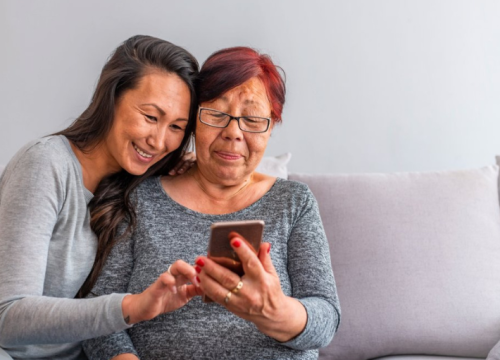10 Ways to Support a Loved One with Parkinson’s

When someone you love is diagnosed with Parkinson’s disease (PD), many emotions and questions may arise. What can I do to help? How can I provide support if I’m not the care partner or live nearby? Read on for 10 practical tips about how to show your support to a loved one living with PD.
1. Educate yourself.
Every person living with Parkinson’s experiences the disease differently, so understanding how PD affects your loved one is crucial. Educate yourself on common Parkinson’s symptoms, including non-movement symptoms. Read our book, Parkinson’s Disease: Frequently Asked Questions for a quick PD primer.
2. Reach out.
Offer a helping hand to your loved one and their care partner. A two-hour visit can give a care partner time for themselves. Invite your loved one to a movie or offer to bring a meal to their home. Find ways to help on a regular basis, such as going grocery shopping, mowing the yard or picking up medication. For more tips, explore our Caring From Afar article.
3. Check in and chat.
Call or facetime your loved one with Parkinson’s, even if you are not sure of what to say. Reach out for their opinion or to tell a story about something that happened this week.
4. Offer to help with appointments.
Offer to take your loved one or friend to a doctor’s or physical therapy appointment, or a group exercise class. If you live far away, try to keep track of appointments, and call your loved one to see how it went.
5. Work alongside the care team.
Keep in touch with your loved one’s care team to make sure they receive the best possible care. Our Global Care Network creates opportunities for people with PD to access high-quality care from a team of experts. Find expert care near you.
6. Communicate.
Communicating your thoughts with your loved one, as well as listening to their feelings, can help ease stress on your relationship. Have family chats often to share everyone’s feelings, understand what each person is going through, and discuss ways to better support one another.
7. Access local resources.
Interacting with your local PD community can help your whole family find support and learn more about Parkinson’s. Search for your local chapter and other resources near you.
8. Get involved.
Engaging with the PD community is a great way to show support to your loved one. Attend a local Moving Day walk, organize your own fundraiser to support research through Parkinson’s Champions, or raise awareness within your community.
9. Find your support system.
A parent’s or loved one's Parkinson’s diagnosis can weigh a lot on you. Seek out a supportive, comfortable environment to share your thoughts and feelings about Parkinson’s. Join a local support group to connect with members of the PD community. In addition to groups for people living with Parkinson’s, there are also support groups available for family members. Contact our Helpline at 1-800-4PD-INFO (1-800-473-4636) to find a support group near you.
10. Practice self-care.
When caring for or supporting someone with Parkinson’s, secondary caregivers can experience burnout. Addressing these feelings before they result in compassion fatigue is vital to a healthy relationship. Make time for yourself outside of caregiving duties to enjoy what you love and incorporate self-care into your routine.
Helping a loved one with Parkinson’s looks different for everyone. With the right mindset and resources, you can help your loved one or friend navigate some of the challenges of PD.
Explore more resources for supporting your loved one with Parkinson’s.
Related Blog Posts

20 Parkinson’s-Friendly Gifts

Advocacy Is All in the Family for the Hotts
